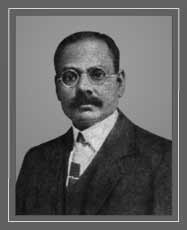
Professor of Geology & Chemistry in College of Engineering, Deccan Gymkhana, age 53, Brahmin, Poona.
10th, 20th, 25th, 28th May 1936.
Of the Four Margas
I. Yoga Marga
Regarding this as chiefly based on (1) Asana (2) Pranayama (3) Concentration (4) Rousing the Kundalini and (5) Achieving higher powers thereby, en route, Sai Baba did not care for these. These were not the steps he recommended to any so far as I know. On the other hand, he said ( I know personally), "Those who proceed by the method of Pranayama must come to me ultimately for further progress."
II. Karma Marga
Baba set the example of living amidst society and labouring to produce goods. He ground grain into flour. He was not for ascetic desertion of society, nor for begging. Though he himself begged within limits (prescribed by his Rinanubandha perhaps), it was for a little food only and when he demanded Dakshina that was for a number of reasons, chiefly clearing off Rinanubandha. He wanted the general run of visitors to continue their grihasta lives and did not advocate Sanyas, i.e., that they should not renounce society or go to beg. He made me and Vamanrao beg, not for ourselves but only for the Guru - as humble service to the Guru. Though Baba did not say so, I think he realised the evil of begging, i.e., indiscriminate begging, to be the loss of one's stored up merit, i.e., "Apurva". Sai Baba's demand for Dakshina was explained by him, when some one asked him why he asked for Dakshina. "Hello, do I ask Dakshina of every one? I demand only from those whom the Fakir (God) points out to me". He demanded only particular sums, and would not accept anything more. None refused Dakshina when he wanted it. Sometimes the demand had other meaning, e.g., (1) get away, (2) get into contact with X,Y,Z etc.
III. Jnana Marga
If this is taken as something confined to inquiry into the Self and an effort to understand the Upanishads and Brahmasutras to get light on that inquiry, that was not Baba's method and aim. His wish was not expressed. But by his example, his devotees should infer that he wanted them to become like himself. His knowledge and experience were, so far as I could see, real and realistic. His awareness exceeded the bounds of our space and time - extended over all the worlds and embraced the distant past and future as well as the present. He knew, therefore, what existence in any of the worlds and at any time had to offer for the soul's enjoyment and with such knowledge he renounced all attachment. He was perfectly detached amidst numerous attractions. His life was, therefore, real Vairagya and real Nishkamya Karma which would lead one to God.
IV. Bhakti Marga
This is, of course, the main plank of most saints - as it is, of Sai Baba. Obeying, serving and loving God are its chief features. The peculiar feature stressed by Sai's example and words is the vast importance of developing this devotion on the basis of devotion to one's guru or teacher. It is seeing God in, through and as the Guru, identifying the Guru with God.


